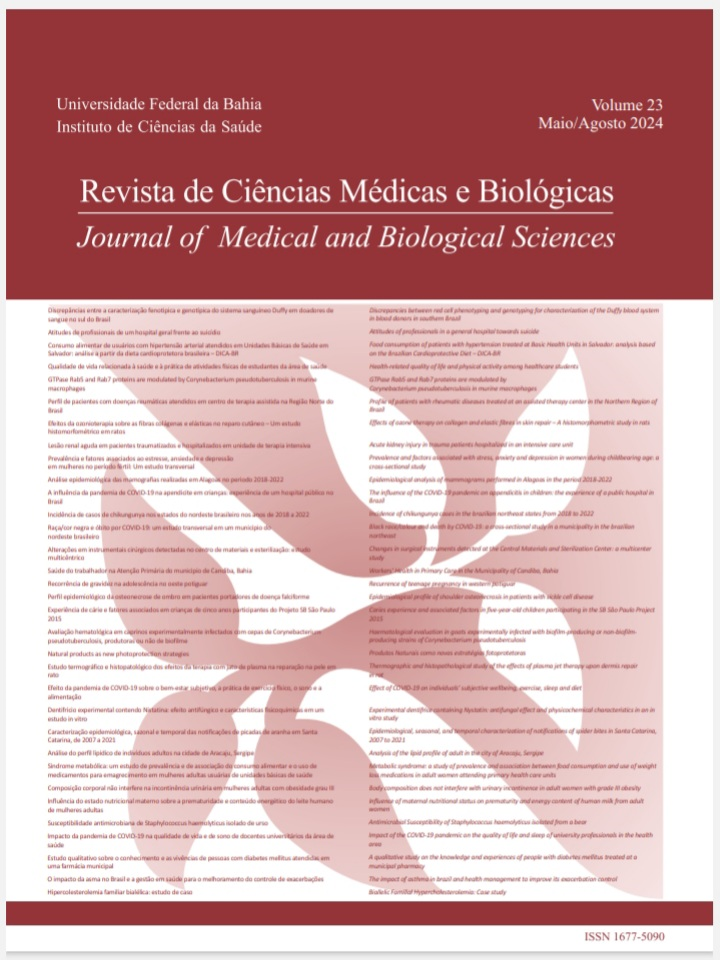Avaliação clínica e hematológica em caprinos experimentalmente infectados com cepas de Corynebacterium pseudotuberculosis
DOI:
https://doi.org/10.9771/cmbio.v23i2.61272Keywords:
Caprino, biofilme, Corynebacterium peseudotuberculosis, hemograma, infecção experimentalAbstract
Goat farming is an important segment in agribusiness. However, there are some obstacles to production that cause serious damage, including pathogens responsible for persistent diseases, C. pseudotuberculosis - the etiological agent of caseous lymphadenitis. To analyze the disease infection, 18 (eighteen) Canindé goats were divided into three groups, one control group (without infection) and two infected groups, one group with a producing strain of C. pseudotuberculosis and another group with a non-biofilm-producing strain. Before infection, 4 mL of blood was collected for a blood count. After infection of the animals, blood collections and clinical examinations were carried out at 7, 14, 28, 45, 60, 90, 120, 150 and 180 days post-infection. After this period, the animals were technically slaughtered for post-mortem analysis. It was possible to observe the presence of lesions in all infected animals, and it can be concluded that the biofilm-producing strain caused greater lesions in the animals. For experimental infection conditions, haptoglobin peaks were confirmed in acute infection, as well as blood count values within the normal range, however, an increase in the number of leukocytes was observed, approaching the maximum reference value in acute infection and in chronic phase of the disease, which may suggest reinfection of the disease.
Key words: Goat, biofilm, Corynebacterium peseudotuberculosis, blood count, experimental infection.
Downloads
Downloads
Published
How to Cite
Issue
Section
License
Copyright (c) 2024 Journal of Medical and Biological Sciences

This work is licensed under a Creative Commons Attribution 4.0 International License.
The Journal of Medical and Biological Sciences reserves all copyrights of published works, including translations, allowing, however, their subsequent reproduction as transcription, with proper citation of source, through the Creative Commons license. The periodical has free and free access.


